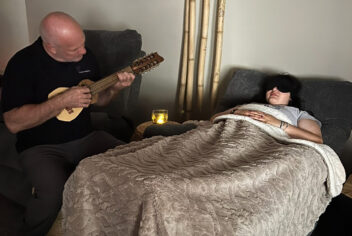Nonprofits help make people’s lives better — but what will you do if somebody at your nonprofit is making people’s lives a nightmare?
Incidents of molestation and sexual abuse can happen anywhere — particularly in places that provide care to vulnerable people — and nonprofits are, unfortunately, not an exception.
If your nonprofit works with children, disabled persons, or the elderly, your mission depends on your ability to protect these vulnerable populations. That means you’ve got to be sure you hire vetted people, train your staff to recognize signs of abuse, and establish protocols and procedures to help you prevent abuse.
Let’s explore a scenario involving molestation and sexual abuse and discuss some steps and practices your nonprofit might consider adopting to help protect yourself in a similar situation.
The Nonprofit:
A nonprofit operated an adult day care facility serving clients with mental disabilities. The nonprofit employed aides and nurses, while facility maintenance and groundskeeping duties were performed by third-party contractors.
The Incident:
One afternoon, day care staff caught one of the maintenance contractors engaged in a sexual act with a client who had a severe mental disability.
Police were called, the contractor was arrested, the client’s legal guardian was alerted, and witness statements were documented in an incident report.
The Legal Action:
Because the severity of the client’s mental disability meant they could not give consent, sexual assault charges were filed against the contractor, and lawsuits were filed against both the contractor’s employer and the nonprofit.
The client’s family claimed that by engaging with the contractor’s employer in the first place, the nonprofit also bore responsibility for the incident.
The Coverage:
As soon as the nonprofit was notified about the legal action, they alerted their broker, who began the process of making a claim on the nonprofit’s Improper Sexual Conduct and Physical Abuse (ISCPA) policy with Nonprofits Insurance Alliance (NIA).
NIA staff reviewed the claim and provided the nonprofit with an attorney to provide their defense.
The contractor and the contractor’s employer each retained their own legal representatives.
The Result:
An investigation was undertaken to review the incident, the nonprofit’s response, the procedures and practices that were in place, and the nonprofit’s contract with the maintenance company. It was determined that:
- During the selection of the contractor, the nonprofit had reviewed the contractor’s staff, required screening (fingerprinting, background checks, etc.) for any contractor that would be on-site, and found no evidence of prior abuse.
- The nonprofit’s staff had been trained in abuse prevention and recognition.
- Staff diligently adhered to established protocols and practices.
- The contract between the nonprofit and the contractor included a clause that required the contractor to defend and indemnify the nonprofit against legal action resulting from the harm caused by the contractor’s employees.
- Thorough documentation was kept which supported all.
Although the lawsuit against the nonprofit did end up going to trial, the factors above were crucial in demonstrating that the nonprofit’s staff had done their duty and had not been negligent, which resulted in the case against the nonprofit ultimately being dismissed.
The contractor was found guilty of sexual assault and received a lengthy prison sentence, and the maintenance company that had employed them was also found liable — which resulted in a significant monetary settlement being paid to the client.
What Did the Nonprofit Do Right?
In this situation, there were several things that helped this nonprofit be prepared to protect itself.
Strong Contract Language
This nonprofit was wise to have included the clause in their contract with the maintenance company that specifically required the contractor to defend and indemnify the nonprofit against legal action resulting from the harm caused by the contractor’s employees.
This contract language ended up being crucial to protecting the organization as it meant that the nonprofit was not held liable for the harmful actions of someone that they did not hire and could not have screened.
Instead, liability rightly fell to the perpetrator and the maintenance company that hired them.
Incident Reports & Documentation
The nonprofit had longstanding procedures in place around incident reports and recordkeeping. Staff members were trained on these procedures and the nonprofit regularly held refresher sessions.
This preparation paid off because, as soon they became aware something was wrong, the nonprofit’s staff knew to document the relevant times, dates, locations, witnesses, steps taken, and other details surrounding the incident.
This helped the nonprofit’s legal defense team get a clear timeline of events, identify potential witnesses whose testimony might be helpful, and to review the nonprofit’s actions and processes to spot any potential liabilities.
Screening Practices
Requiring screening checks and fingerprinting before any contractor were allowed on-site was an important safety protocol.
By making demonstrable efforts to prevent people with histories of abuse or other risks from encountering vulnerable clients helped underscore the nonprofit’s commitment to providing a place of safety for the people that counted on them.
Although the abuser did not have a prior record of abuse, these practices and procedures helped prove to the court that the nonprofit had not been negligent and had made all reasonable efforts to identify and screen potential bad actors.
Quick Activation of the Claims Process
As soon as the nonprofit was notified it had been named as a defendant in the lawsuit, the first thing they did was to notify their insurance broker, who then activated the process of making a claim on their ISCPA policy with NIA.
Doing this quickly was important because it enabled NIA to be involved in the defense process from the early stages.
As a result, NIA was able to advise the nonprofit on appropriate strategy, not only to help them organize their legal defense, but also to help them avoid making missteps and statements that could potentially come back to haunt them later.
How Can Your Nonprofit Protect Itself?
No one wants to believe that molestation and sexual abuse can happen at their nonprofit, but unfortunately, it can happen anywhere — and turning a blind eye to the risks and failing to prepare can be devastating.
You want to protect the people you serve and protect your mission, too: That means you’ve got to create an environment where you manage the risks that you can control — and ensure that you’re not liable for the risks that you can’t control.
Some steps you might consider include:
Safety Protocols & Procedures
When you’ve got vulnerable people in your care, the last thing you want is for a problem to catch you off-guard and unprepared — which is why you want solid policies and procedures to help you keep everyone (and your mission) safe.
Here are just a few policies and procedures you might consider as part of your overall risk management plan.
- Check-in Procedures: Limiting the points of entry and egress to your facility and requiring all clients, staff, volunteers, contractors, and visitors to sign in and sign out can help you be sure that the people on-site are supposed to be there.
- Pre-approved Pickup List: Never allow clients to leave with an unauthorized person. Anybody picking up someone in your care should be on a list of pre-approved people — and be able to confirm their identity — before you release the client to them. Upon arrival, the pre-approved custodian should be required to provide proper identification.
Note: Verbal approval by the client’s guardian over the phone is not enough to protect your nonprofit from liability if something goes wrong. - Proper Supervision: Any time clients are on-site, you need to be sure that they are supervised by members of your team that have been trained to meet their needs, and that all entrances and exits are monitored. After all, you can’t keep your clients safe if you don’t know where they are.
- ‘Three-Person’ Rule: Never allow a team member to be alone with a client for any reason. If someone is accused of abuse or other wrongdoing, and there wasn’t a third person in the room, you’ll have no witnesses to aid your defense — it’ll be your word against theirs.
- Incident Reports: Keeping detailed incident reports can help protect you in a variety of ways. Even for minor bumps and scrapes, be sure your team knows to record:
- What happened
- Who was involved
- Any and all care given
- Who was notified
- Any other relevant details
Review the incident report with the client’s caregiver or guardian, have them sign and acknowledge it, and give them a copy.
NIA Resource: All nonprofits insured by NIA get free access to My Risk Management Plan — online tools to help you create a risk management plan that reflects your organization’s unique needs, priorities, and culture.
Screening Your Team
You can’t control who an outside organization chooses to hire, but you do get to choose the people on your team — so you want to be sure your people are right for the job.
Every nonprofit should vet potential employees and volunteers, but if your mission serves vulnerable people, your screening process must be especially thorough — you can’t afford to risk their safety by hiring someone who might put them in danger.
After all, would you want someone with history of DUI or road-rage incidents driving your nonprofit’s senior shuttle? Would you want someone with a record of abuse anywhere near your nonprofit’s childcare center?
Of course not.
NIA Resource: To help you be sure you’ve got the right people in the right positions at your nonprofit, NIA-insured nonprofits get a 40% discount on screening services from IntelliCorp.
Reviewing Your Contracts
Running a nonprofit is risky enough, you don’t want to be stuck with someone else’s risks, too.
Before your nonprofit enters any kind of contract with an outside organization, you want to be sure it’s a mutually beneficial arrangement — and part of that is ensuring that each party is legally responsible for the actions (good and bad) of their own people.
To properly protect your nonprofit, a verbal agreement and a handshake is not enough — who assumes liability for what needs to be spelled out clearly in your contract. This is where your nonprofit’s attorney comes in.
Ideally, your attorney should be involved with drafting any contract from the start; but if nothing else, they should at least be called in to review the contract language before anything is signed.
Finally, while a proffered “standard boilerplate contract” may seem simple enough, these should be reviewed by your attorney as well — otherwise, you never know what you might be agreeing to!
This will help you be sure that the risks and liabilities your nonprofit faces in the course of your mission work are ones that you can actually do something about when you identify them.
The Right Training
Your staff and your volunteers can be your best lines of defense against molestation and sexual abuse incidents — if they’re trained to recognize the signs and report them.
Training courses you might consider include:
- Abuse prevention training: Training to educate your team about abuse and how to responsibly address it, such as:
- Types of abuse
- Red flags to watch for
- Symptoms and signs of abuse
- Abuser characteristics
- Grooming
- Common errors
- How to respond effectively
- Mandated reporter training: All states have mandated reporter laws in place. While the details can vary, people that work with children, the disabled, or the elderly are generally required to report any suspected abuse.
Be sure to check and see what your state’s requirements are for training, and what your nonprofit’s responsibilities for providing training include.
Documentation & Recordkeeping
It’s relevant for all risks: If someone accuses your nonprofit of wrongdoing, and it’s your word against theirs, you’re going to have a hard time defending yourself.
That’s why it’s smart to document everything — your processes, your procedures, times, dates, decisions, attendance, every client check-in, every incident report, all security footage, and more.
Keeping good records not only helps your team stay more organized, but if your nonprofit ever needs to defend itself in court, your records can serve as proof that:
- You operated responsibly and in good faith
- Your policies, training, and procedures complied with the law
- Rules, policies, and procedures were consistently and equitably applied
- Everyone understood their responsibilities and duties
- Staff acted and responded appropriately
Strong recordkeeping practices can provide you with evidence to present in court, which can help put you in a much stronger position to defend your mission and your good name.
Conclusion
All nonprofits come with risks, but when your nonprofit works with children, the elderly, disabled people, or other vulnerable populations, those risks reach another level entirely.
Sexual abuse and molestation are the antithesis of everything nonprofits stand for and represent — operating your nonprofit as if it can’t happen enables and emboldens bad actors.
Failing to address those risks at your organization is both irresponsible and a betrayal to every person you serve and every person on your team.
While you can’t control the actions of bad actors, by effectively managing risks in the areas you can control — and avoiding those you can’t — you can make your organization a place where there are as few opportunities for bad actors to cause harm as possible.
From the Claims Files stories like the one above are intended to be informational in nature. Coverage will vary depending on language specific to your policy and your specific facts and circumstances.
Please contact your insurance broker and/or agent for your specific coverage implications based on your specific situation and follow any claims reporting procedures from your policy with your broker if there might be a claim.
Nothing in this story should be considered as legal advice or opinion and you should seek independent advice or legal counsel.





